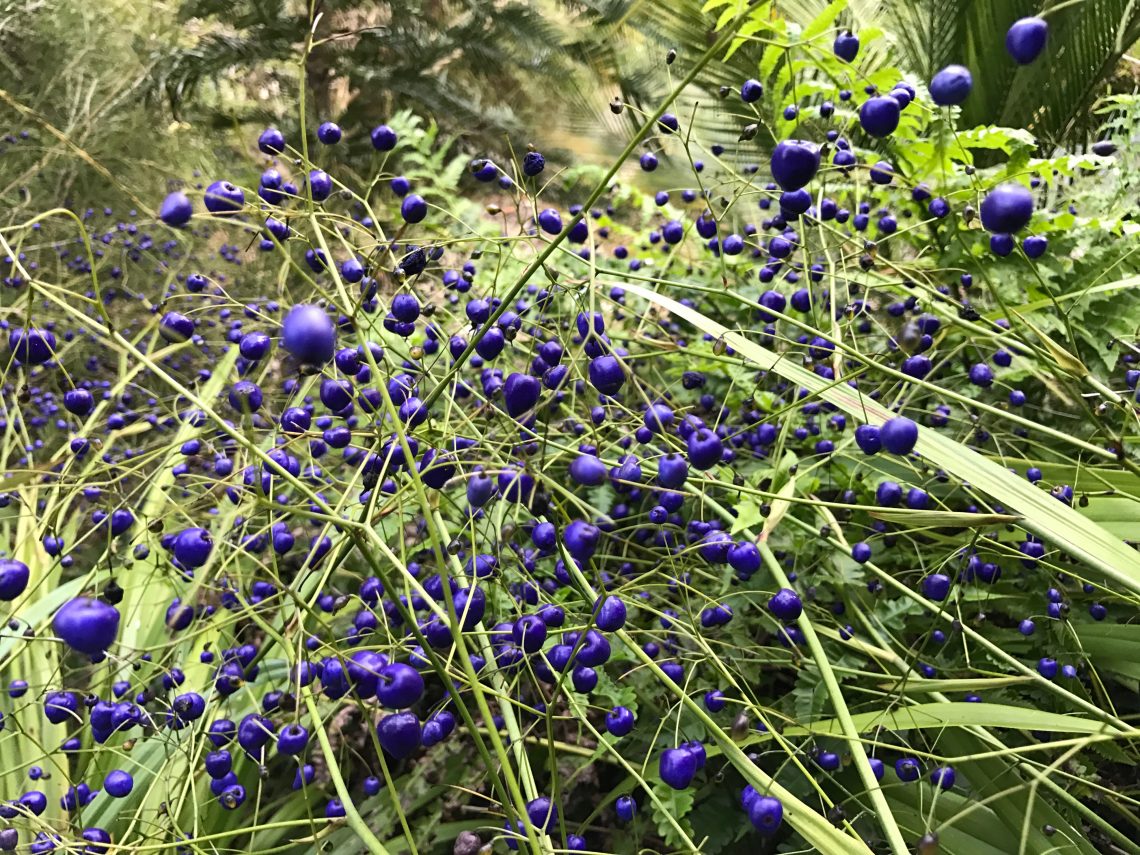
Clare Al-Witri, Horticulturist
The summer that I began working in the Garden’s Australasian collection, the Dianella we grow had an exceptional flowering and fruiting year. Dianella fruit at its most eye-catching is a deep, clear blue-purple. That summer there were cascades of berries suspended on wiry black stems throughout the collection. I became fixated with the color blue.
Blue is an uncommon color in plant life. Plants don’t synthesize any true blue pigments. Green, yellow, orange, red, and purple can be seen in foliage and flowers because of the presence of pigments like chlorophyll, xanthophyll, carotene, and anthocyanin respectively. Plants tweak the pigment anthocyanin to create bluish colors. These tweaks can involve shifting pH levels and mixing pigments, molecules, and ions.
Over the last year as I’ve deepened my familiarity with the Australasian collection, I’ve looked for more instances of blue. Below are photos of the color in Australasia. Some blues can be seen all year, others are ephemeral. In the Garden, it’s always worth it to look again to see the little things that come and go so fast.
The Australasian collection at UCBG is a quiet, wild spot to visit year-round. Tree ferns and towering New Zealand conifers provide shade in summer. Australia’s members of the family Proteaceae bloom in late fall, usually a particularly peaceful time in the garden. I’ll be leading a Members’ Walk through the collection on December 13th at 1 pm.
Note: Common names for Dianella include flax lily (Australia), ink berry, blueberry, and turutu (New Zealand).
